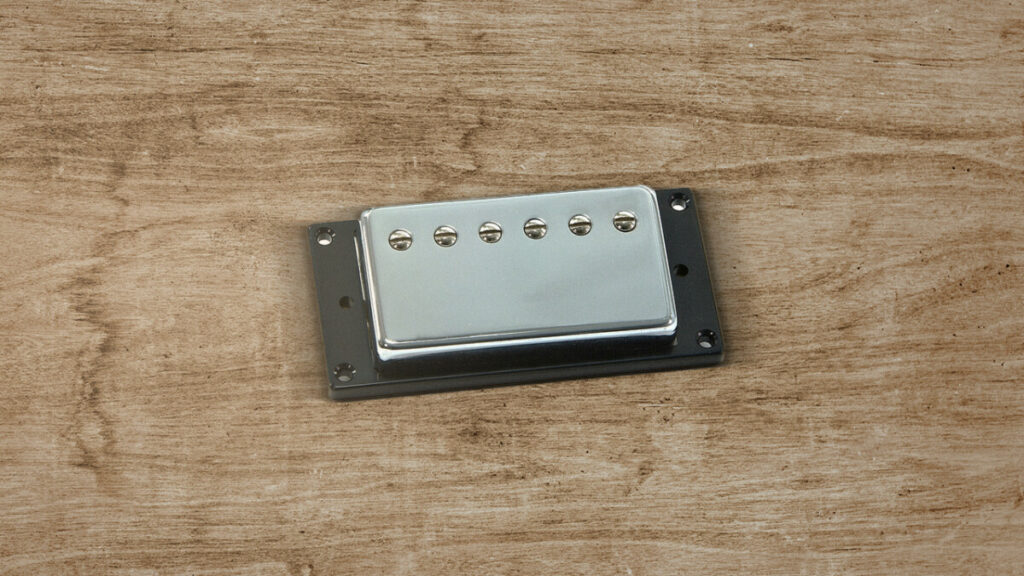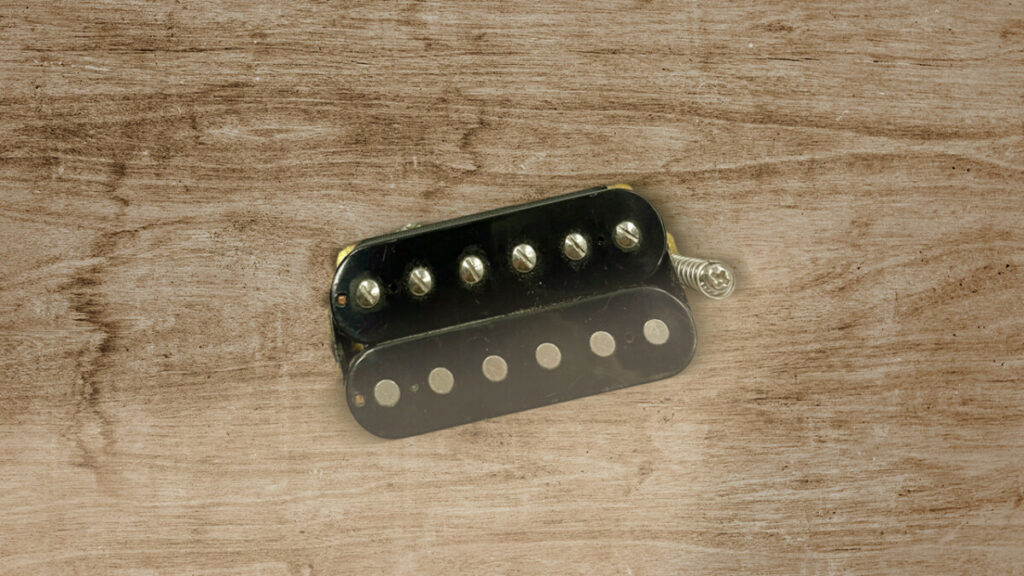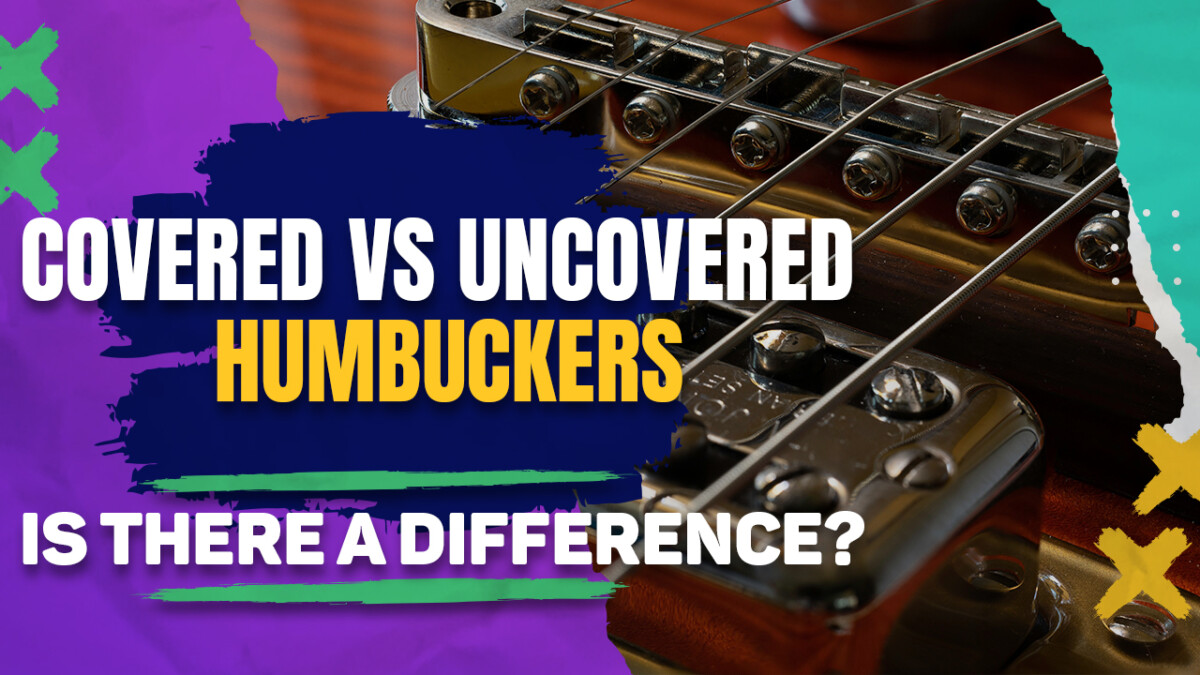Stuck in the middle of deciding whether to go for covered or uncovered humbuckers on your imminent guitar purchase? Don’t sweat it! This piece is going to unravel the pros and cons of both options, equipping you with enough knowledge to make a smart choice.
We’ll delve into those nuanced tonal disparities and unique traits each type possesses so that you can pinpoint which one really resonates with your style.
So strap in, and let’s embark on an exciting exploration into the realm of humbuckers!
Table of Contents
Tone and Characteristics of Covered Humbuckers

Humbuckers with covers tend to deliver a deeper, more vibrant sound compared to their uncovered counterparts. Some of the best humbucker pickups are covered, although it doesn’t mean you shouldn’t go for an uncovered humbucker. The cover acts as a regulator for heat transfer and audio projection, leading to an overall softer tone. You’ll often find these humbuckers in jazz, blues or rock music scenes since they lay down an awesome foundation for various styles.
The resonance at the higher end is harmonious; lower tones along with the mid-tones create a resonant sound that stands out in any musical arrangement. People usually characterize this sound as velvety – it has an easy-on-the-ear top range and killer sustain capacity. There’s something really soothing about its midrange warmth that just hits differently! The bass possesses a strong punch yet doesn’t overpower; achieving equilibrium between high and low frequencies becomes almost effortless.
All things considered, if you’re looking for versatile tonality across different playing techniques, covered humbuckers are definitely worth checking out.
Tone and Characteristics of Uncovered Humbuckers
Let me tell you, these naked humbuckers have a vibe all their own. With zero protection or covering, they can snag an expansive spectrum of sound. It’s all about location; nestled under twin magnets, humbuckers are prime recipients for the full resonance of your guitar strings. Thanks to this strategic positioning, stripped-down humbuckers often deliver a more vibrant audio punch than those that come wrapped up.
- Stripped bare – no casing
- Snags an expansive spectrum of sound
- Nestled beneath two powerful magnets
- Packs a brighter sonic wallop than the covered versions
Pros and Cons of Covered Humbuckers

When it comes to the debate between covered humbuckers and their uncovered counterparts, there’s no clear winner. Each brings something unique to the table.
For starters, let’s talk about design flexibility with covered humbuckers. In contrast to bare-bones pickups that usually sit side by side, you can arrange these bad boys in any pattern you want – whether you’re into traditional pairings or prefer an unconventional V setup. It’s a game-changer for those who love customizing their guitar bodies.
But that’s not all! These shielded beauties also deliver better sound clarity than your average exposed humbucker. How does this magic happen? Well, think of the cover as a protective layer separating your strings from coils which results in purer sounds and more power output – basically music nirvana!
However, everything isn’t sunshine and rainbows with these guys because they do have one minor flaw: Noise interference tends to be higher thanks to that pesky metal cover acting as unintended amplification for disturbance noises.
Pros and Cons of Uncovered Humbuckers

Playing on uncovered humbuckers will give you a wide array of tonal options. The design, with its exposed coils, enhances the functionality and allows for better positioning of pickups.
Here are some of the pros why going bare could be beneficial:
- They’re ultra-responsive and sensitive
- Tweaking the pickup height is a breeze
- You get an expansive sound spectrum
- Gain total control over each individual pickup
The only con? Those coil wires that are now out in the open run a risk of getting damaged. But hey – throw some protective gear on them, and they’ll serve up your dose of sonic versatility just fine! Uncovered humbuckers might just be what you need to add more flavor to your guitar game.
Final Considerations for Choosing the Right Humbucker
Picking the right humbucker is all about understanding what you’re chasing after, sound-wise. You have to weigh up how much feedback you can handle and decide if single-coil or dual-coil pickups resonate more with your musical style. Single coil vs humbucker pickups has been a topic of discussion for many years now, but it all depends on your playing style.
Remember that the string gauge, pickup height, and balance between strings play a significant role in shaping your desired tone. For example, heavy-duty strings coupled with high pickup positioning can pump out powerful output and a rich tone. On the flip side though, lighter strings paired with lowered pickups are likely to give off an airier sound with less intensity.
Balance is key when it comes to achieving harmony across each note – keep this in mind while adjusting string-to-string balance for uniform volume levels on every strum.
At the end of the day though, the perfect humbucker should be able to deliver on your sonic vision.
Frequently Asked Questions
What Is the Difference Between a Covered and an Uncovered Humbucker?
Covered humbuckers are shielded by a metal cover which protects them from interference and provides you with that smooth, warm sound we love so much. On the flip side, uncovered ones show themselves off – brutal honesty in their raw form. These guys offer different levels of gain structure and ways to shape your music’s character— it’s like having an audio wardrobe at your fingertips.
How Do I Install a Covered or Uncovered Humbucker in My Guitar?
Ready for some DIY customization action with your guitar pickups? Just follow those wiring diagrams—it’ll be as easy as pie! As soon as you get everything connected properly, your axe will start belting out sonic symbols resonating through ether. Strap yourself in for an amazing ride into the customizing universe!
What Type of Sound Do Covered and Uncovered Humbuckers Produce?
Choosing a pickup is akin to picking an artist’s brush- each has its own personality traits that help paint the soundscape just right! Need something cozy and soothing – go for covered humbuckers; they’re known for their warm & mellow notes. Craving more sharpness than softness? Then let loose with naked (uncovered) pickups—they belt out bright tones packed full of punchiness.
What Are the Most Common Sizes of Covered and Uncovered Humbuckers?
Covered or not folks often question what size these puppies come in anyway. Well generally, Stratocaster and Telecaster guitars have coil-splitting options suitable for both types but the classic Gibson style tends to be the most common pick. The bigger boys deliver rich tonal landscapes while smaller counterparts make sure every note gets its moment under the spotlight.
Can I Use Both Covered and Uncovered Humbuckers in the Same Guitar?
Absolutely! You can have the best of both worlds by mixing covered and uncovered humbuckers in your guitar. The split coils let you shape your tone like a sound sculptor, enabling you to craft a variety of unique sounds that represent who you are musically. So go ahead—get experimental with it!
Conclusion
Deciding between covered and uncovered humbuckers is essentially like choosing heads or tails on the same coin. Both present their own distinctive sound attributes.
At the end of the day, it’s all about what resonates with you. Do you crave that classic warmth and smoothness from a covered humbucker? Or perhaps, are you drawn to the sharp intensity of an exposed one?
Before making your decision, listen closely to both options. You might just discover irresistible qualities in each that enrich your music!

